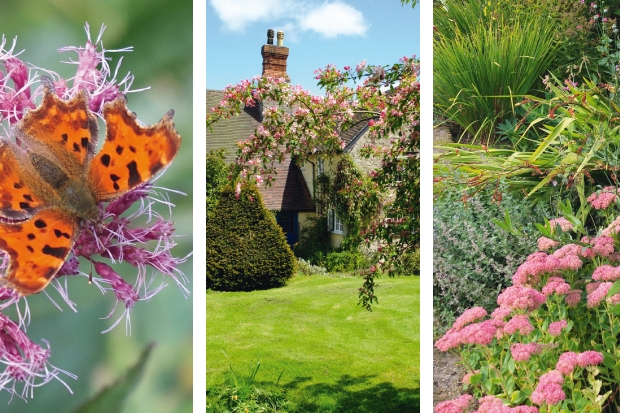Incredulity is rarely a word that crosses my mind when it comes to garden writing. This genre can, of course, be quite straight-forward and descriptive, like Miss Jekyll’s rather boring volumes. It can equally be wildly funny, as when Anne Scott-James and Osbert Lancaster hitch their respective wagons to horticulture and produce a spoof history. But where, oh where did Sam Llewellyn’s exotic aberration spring from? Is it fact or fiction? I don’t think I ever decided which. This is one of those books where you spend the whole time worrying less about what’s happening in the kitchen garden in spring and more on trying to work out what the hell is this place and who on earth is this man with a less-than-house-trained duchess in tow.
The author, he reveals, lives in a house in Herefordshire, in the north part of the county. It is called The Hope. He’s not your Alan Titchmarsh earthy son of the soil type or a member of the silk dress and pearls school of the Rosemary Verey variety. He’s highly educated — not everyone listens to Tacitus on headphones while gardening, for a start. He writes novels in France, has a wife, a daughter who gets married and a son called Will. His connections ramble on through the county upper classes with an aunt a daughter of Tresco who marries into St Michael’s Mount. The house has a library and medieval vaulting. It sounds lovely after a fashion.
And then there is the duchess. I wondered whether she might be a figment of the writer’s imagination, as the county isn’t exactly stuffed with free-roaming duchesses. No such luck. She drinks gin like the proverbial fish and smokes Capstans on the scale of a kipper smokery. Bossy, arrogant and capricious, she erupts in and out of the text like the Madwoman of Chaillot. This is a female who gardens with the family rubies and diamonds jangling round her neck and wrists, who can wield a chainsaw and whose gin-drinking starts at breakfast, with anchovies. And what’s more she has the effrontery to turn up at the author’s house in a taxi, expecting him to pay the fare — amounting to £796.20, if you please. At that point I’d have shot her and dumped her in one of the three filthy ponds which seem to exist — but God knows where — in the garden.
This is an author who has the mind of a demented magpie. Never has so much acute observation been expended on an area of cultivation about which you are told so little — its size, its soil type, its aspect or anything really. We learn, with difficulty I might say, that, yes, there is a kitchen garden which produces artichokes, salad greens, parsnips, asparagus, leeks and spinach. I got quite excited when that was divulged. There’s an orchard producing too many apples, don’t we know. There’s a greenhouse stuffed with tomatoes; and there’s some topiary and a sunken garden. My aesthetic eye quivered when I read of an ornament which is ‘a plywood cutout of a giant boiled egg’, but there’s no accounting for taste, even bad taste.
Much of the text hymns the delights of alcohol from someone who might be in the running to be the Keith Floyd of horticulture, although the duchess has got it really badly and hers has to be kept under lock and key. And then both of them are never there. At the drop of less a hat than practically anything they’re off to Sicily, Malta, Cuba — anywhere, really, which takes them from the garden they ought to be cultivating.
And yet these almost hallucinatory articles — for that’s how they began their life — have a compulsive hold on the reader. Also, reality is there in the form, for example, of features of the local landscape, like Clee Hill, and the mention of a local author like Helena Attlee, whom I’ve actually met. And, yes, sadly, the author does run out of steam, but not before he’s given the reader the quirkiest little garden book I’ve read for years. It is offbeat, beguiling, maddening and wickedly observant, and the writer is endowed with a prose style unique among garden writers. This is the garden-lover’s stocking-filler of the year. I loved it; but Sam Llewellyn won’t get a job on Gardeners’ Question Time.





Comments